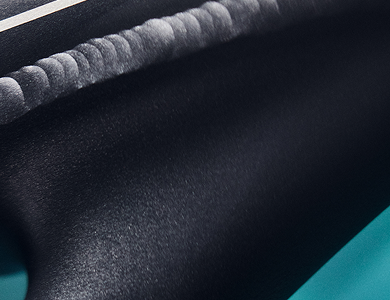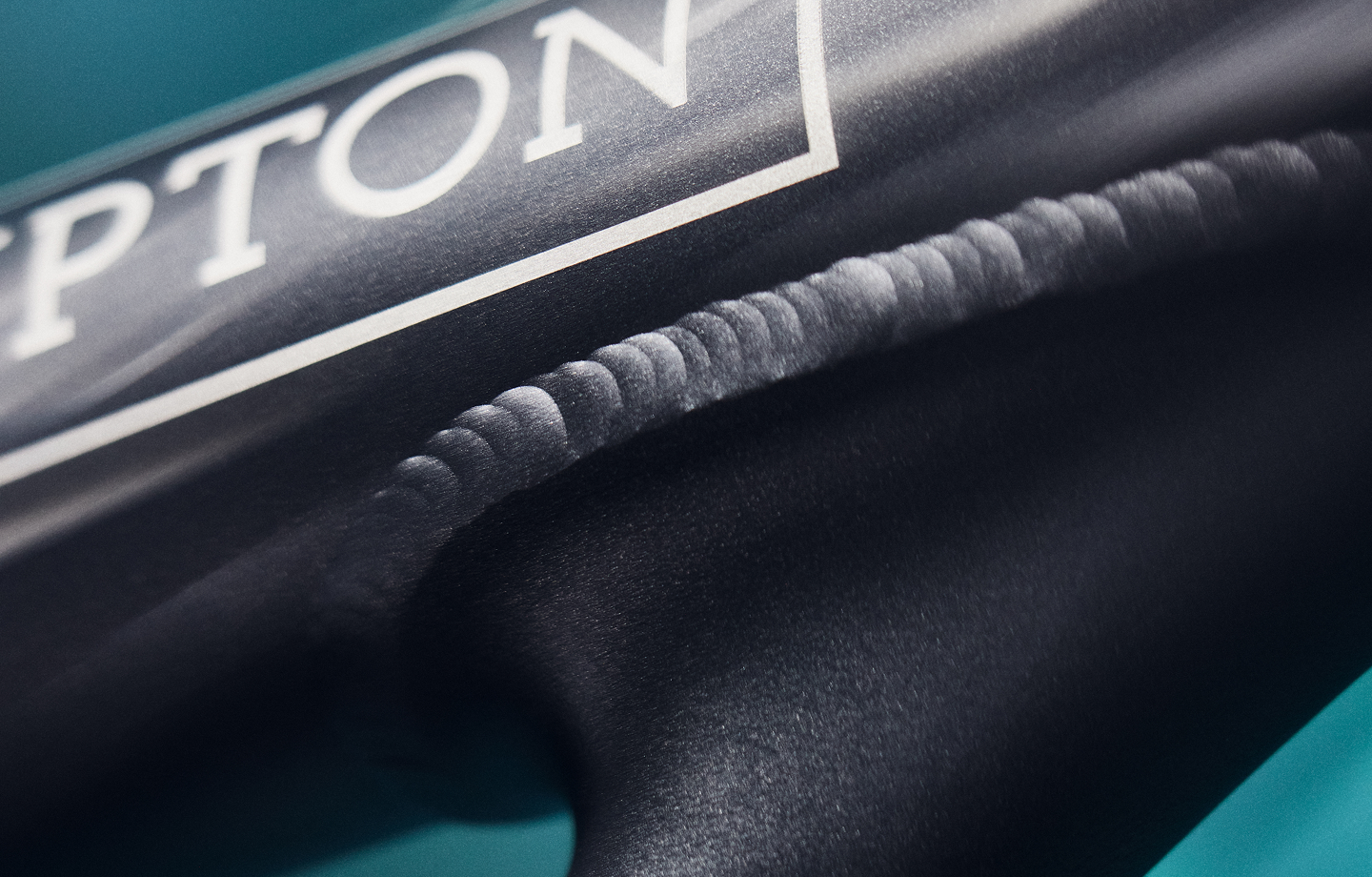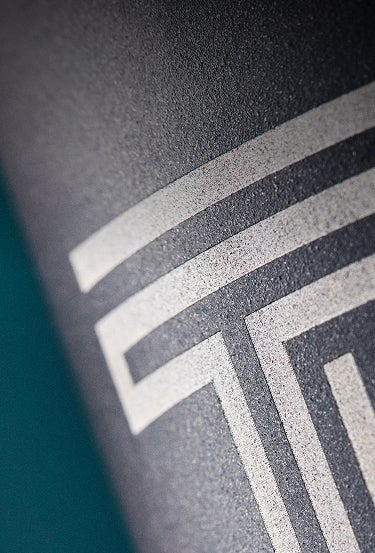8 steps of the Cerakote coating process
1. Degreasing
The bike frame is soaked in a cleaning solution to remove all the oils, grease and residue from the titanium manufacturing process. Without this step, the coating won't stick to the metal, so it's essential to do it properly.
2. Masking
Any functional areas like threads, contact points and logos are masked off using heat-resistant tape and plugs. This ensures clean lines and preserves mechanical performance.
3. Sandblasting
The frame is blasted with aluminium oxide to create a consistent surface texture. This step maximises coating grip and long-term durability.
4. Final prep
After sandblasting, the frame is air-cleaned and baked to remove hidden contaminants to guarantee a clean foundation for coating.
5. Mixing
Cerakote is mixed with a catalyst according to strict weight ratios. Precision and accuracy are key to optimal results.
6. Spraying
Using high volume low pressure (HVLP) spray guns, thin, even layers are applied with expert control. The result: a smooth, professional-grade finish with ideal film thickness.
7. Flashing
After spraying, the frame rests at room temperature to let the solvents evaporate. This prevents defects and is essential preparation for curing.
8. Curing
The frame is baked at a specific temperature based on the titanium material and the coating type. This final step locks in performance creating a strong, reliable and beautiful finish.
What do our experts say?
When Phillip and his team started work on the T Line Ceratech, they had one goal in mind: to enhance the T Line.
“We are constantly finding ways to innovate and improve our bikes, and inspire people to use them as much as they can,” says Phillip. “Part of getting people excited to ride their bike is getting them excited about their bike, and as human beings that often relates to colours.”
The T Line is the lightest Brompton ever made and its aesthetic is celebrated by riders all around the world.
“We chose Cerakote because it allows us to add colour without compromising the other qualities of the T line.”






















